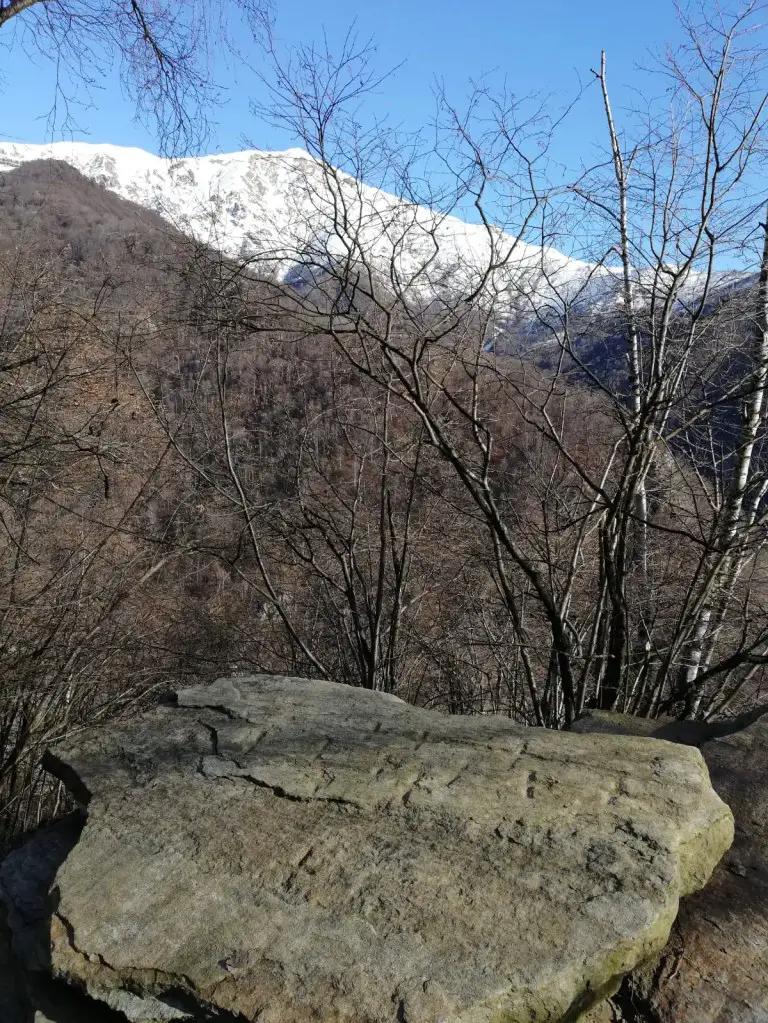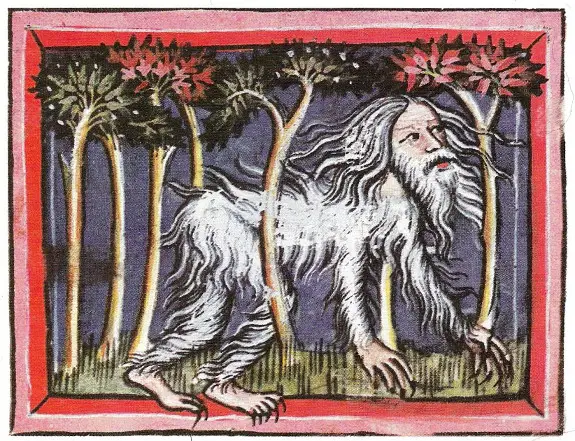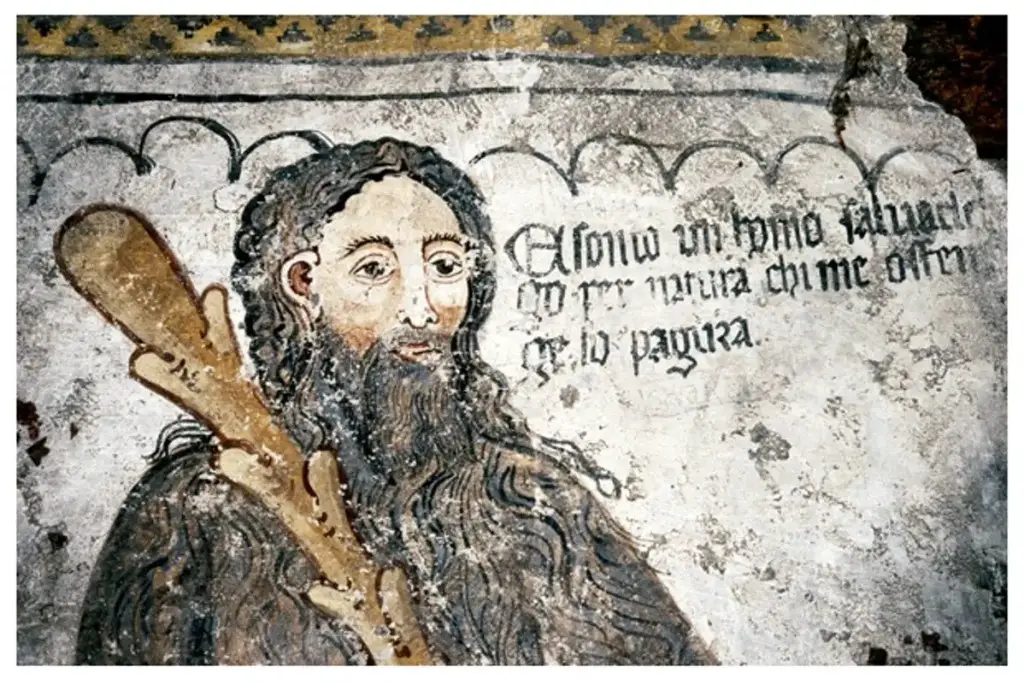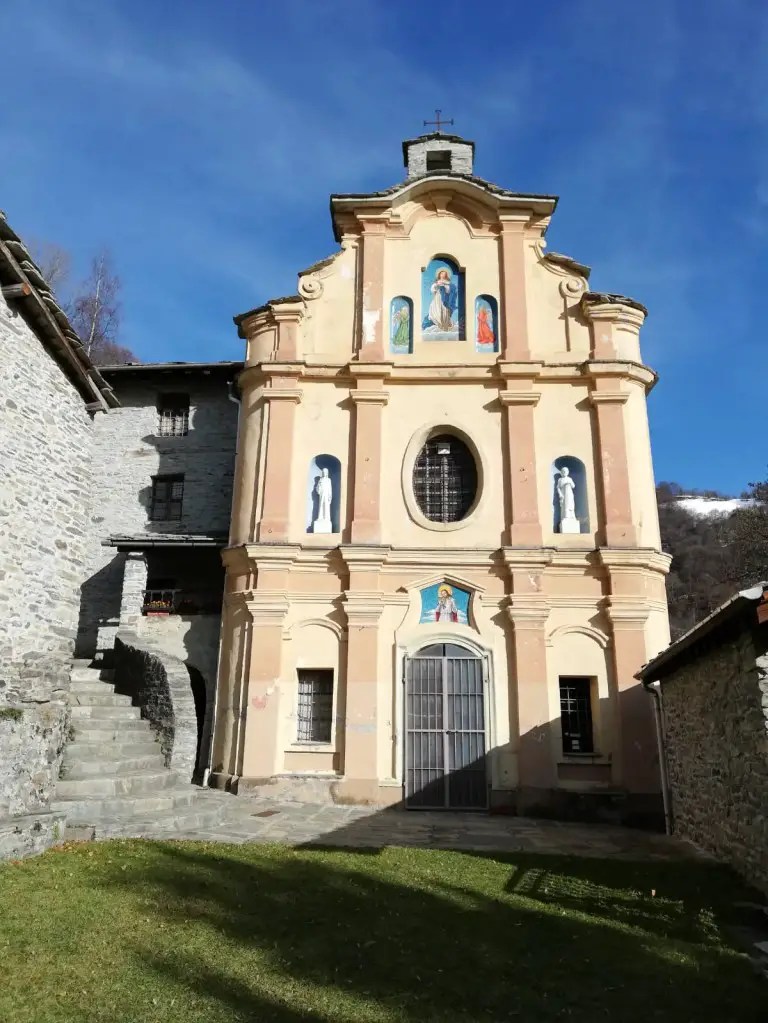Legends and popular traditions about the figure of the Wild Man are widespread throughout the Alps [which we will have the opportunity to analyze on Wednesday evening together with Massimo Centini on our YouTube channel]. Thanks to this report by GM Mollar we discover that on the bottom of the Lanzo valley, in Piedmont, there is even what, according to local folklore, would be his tomb: let's go and see precisely what the legend that has been transmitted to us tells us through the ages.
di Gian Mario Mollar
At first glance, it is just a large boulder on the side of the road. You risk going straight, without noticing. Instead the stone overlooks the valley floor of Lanzo, in Piedmont, along the road that leads to the Salvin Refuge, has a story to tell. We can find out by paying a little attention to the explanatory sign, installed by the Municipality of Monastero di Lanzo. The sign says that the boulder has had several vicissitudes, before finding its current location. In the 50s, during the works to widen the mule track, a bulldozer pushed him into the bed of the Tesso stream, where he rested, upside down, for about 2016 years. In 3, thanks to the interest of some local folklore enthusiasts, the large boulder (about 2,5 × XNUMX m) was laboriously brought up along the escarpment and repositioned on the edge of the road. The fall had not left it unscathed: the upper slab, the one of greatest interest, had separated from the rest of the boulder. During the recovery, then, something went wrong, and the boulder remained upside down for some time, before being overturned and finally finding peace in its current position.
But why bother with a simple one roc ("Pietrone" in Piedmontese)? The boulder is covered with dozens of crosses, engraved on its surface. The crosses are mostly of the "Greek" type, that is with the arms of equal length, but some also have circular swellings at the ends: in this case they are "ointment crosses". The symbolism of the cross associated with lithic monuments deserves some consideration: in medieval times, in fact, it was used "Christianize”The ancient pagan monuments (menhir, cromlech, cupellated boulders, etc ...) by affixing crosses, symbol of the new faith in Christ. But the cross, in many cases, is also a symbol with ancient roots, already used and present in pre-Christian times.

It is therefore difficult to establish the exact dating of the crosses in front of us. To help us, in this case, is the popular folklore, the stories told during the long winter vigils in the stables, warmed by the breath of the cattle. The tales of the vej, of the elderly, they tell us that the boulder is the tomb ofom selvaj, the wild man who once inhabited those silent woods. Who was the wild man? We can describe him as a kind of primordial man, an ancient dweller of the woods with feral characteristics. In many traditions it is described as an anthropomorphic being of great stature, with monstrous features and covered with skins or lichens, or even with a body similar to that of a primate, bristling with hair (hypertrichosis) and always accompanied by a large club. Man is "wild", because he lives in the woods, but he is not "wild": although he prefers to wander alone along the sides of the mountain, he does not disdain the company of "civilized" men, especially on cold winter nights, during which he approaches the warmth of the bonfires and is ready to share his precious advice with the mountaineers.
The wild man, in fact, is the custodian of an ancient wisdom: knows i secrets of dairy processing and teaches men the "miracle" that allows you to make butter, ricotta and cheese from milk. In other valleys it is also associated withapiculture and to the production of honey, or to the secrets ofcattle breeding or those ofmining, a bit like the dwarves and kobolds of Norse mythology. According to the stories of the Val di Lanzo, the wild man was ready to reveal to the people a further secret: the one that would allow transform whey - the waste from cheese processing - in wax. That night, however, some boys from the village decided to play a cruel joke on him: they threw the stone he used to sit on into the fire and, shortly before his arrival, put it back in its place. The wild man, burned by contact with the hot stone, disappeared into the night, taking with him that last, precious secret of him.
Although he no longer showed up around the fire, the wild man continued to roam the woods, and neither the rain nor the snow deterred him. Only during windy days did he disappear from circulation and remain locked up in his refuge, in the heart of the forest. The wind is the wild man's worst enemy, and is said to have transmitted this fear to local mothers, advising them to keep children indoors on windy days to protect them from disease. When the men stopped sighting him in the woods, they sent a worried shepherd to look for him. He knew where his hiding place was: near the Sanctuary of Marsaglia, an elegant and majestic Baroque church that rises not far from the stone of the wild man. This church, dating back to 1770, also has an interesting history: dedicated to the Virgin Mary, it is said to have been built following the miraculous healing of a deaf-mute shepherdess, to whom she was Our Lady appeared. Legend has it that, when the work was undertaken, the materials and tools for the construction were miraculously moved during the night by the intervention of the Virgin Mary, who she wanted to personally choose the place. Moreover, the sanctuary probably stands on a ancient place of worship, at the entrance to streets leading to the mountain pastures: not surprisingly, stone tools and rock carvings have been found in the surroundings.
But let's go back to our story: the shepherd finds the wild man dying, lying on a pallet. Subsequently, a priest is sent to confess him and administer extreme unction: the wild man suggests that he hang his cloak from a crack of light that filters through his dark cave. The priest does what he is asked to do, and is amazed to see that the cloak remains suspended in midair, attached to the ray of light. When he turns his attention back to hisoh servant, he discovers that the latter has now exhaled his last breath. It is said that the wild man was buried along the road that leads to the Sanctuary of Marsaglia, not far from where his refuge stood. The stone in front of us, therefore, would have been placed by the inhabitants of the place on his burial place, to guarantee him an eternal and undisturbed rest. The crosses that still adorn the boulder today would have been engraved as a good omen and prayer by the shepherds who were passing by, in memory of that mysterious inhabitant of the woods.

The legend of the wild man in Val di Lanzo ends here and the features he highlights are common to many others legends spread throughout the Alps. On this strange figure, however, much remains to be said, as it is a mythological element with roots that sink into the mists of time. Already in Sumerian mythology, over two thousand years before the birth of Christ, we find Enkidu, a wild man with bull's horns and tail, who lives alone in the woods before falling in love with a courtesan and befriending the hero Gilgamesh. Even in the Bible, Esau, Jacob's brother, was covered in a thick cloak of hair and preferred the rural life, so much so that he chose to trade with the latter the birthright (and the consequent responsibilities) in exchange for a plate of lentils.
The forests of the Greeks and Romans were populated by chthonic divinities, halfway between the human and the feral: among the multitudes of Nymphs and Naiads, the fauns and the god Pan (Silvano for the Romans) had several points in common with our wild man, both for their physical characteristics (they were half goats, from the waist down), and for their keeping secrets. The ruthless revelation of the faun Silenus is famous, who confided to King Midas that the greatest joy for men is that of never having come into the world. Cernunnos, the horned god of the Celts, who wandered in the woods of Cisalpine Gaul before the arrival of the Roman conquerors, could be another ancestor of our mysterious wild man.

Moving forward in time, we meet the wild man again in medieval and Renaissance bestiaries, such as Monstrorum Historia by Ulisse Aldrovandi of 1642. It was this naturalist who brought to the attention of the world a "real" wild man: the Spanish Pedro Gonzalez (Latinized according to the custom of the time in Pedrus Gonsalvus), born in Tenerife in 1537 and died in Capodimonte, Italy, in 1618. Gonsalvus was suffering from a severe form of hypertrichosis, with the body entirely covered with long reddish hairs. Thanks to this peculiarity of her, she became an attraction first at the court of France, then in the Duchy of Parma, where she married and had six children, four of whom affected by the same disease. In spite of her polite manners, she earned the nickname of "Wild gentleman of Tenerife", Gonsalvo had to lead the rather unfortunate existence of the "freak phenomenon", considered more a curiosity than a human being by his contemporaries and is believed to have inspired the famous fairy tale de The beauty and the Beast.
But the archetype of the wild man still lives today: think, for example, of the famous Bigfoot American, or al Yeti of the Himalayan highlands, which can boast among the supporters of its existence also the famous mountaineer Reinhold Messner. On the Alps, then, the wild man reverberates in a very rich series of folkloric events. In the impossibility of providing an exhaustive list, we will limit ourselves to mentioning a few: the masks of the "Bear" in the Piedmontese carnival tradition, the Krampus in Trentino and South Tyrol, i Mammothones in Sardinia, the Deer Man (Gl 'Cierv') in Abruzzo, and so on. In Lombardy, in the village of Sacco, there is a sixteenth-century picta room with an extraordinary fresco of the wild man, complete with shaggy fur and club. The cartouche that flanks it summarizes its characteristics:
"Ego sonto a wild homo by nature, who ofends me ge fo fear. "

It is difficult to establish what the origin of this was archetype, which we have seen to be so widespread and recurrent in traditions that are also distant and distant from each other both in space and in time. Perhaps behind this bizarre figure in the popular imagination lies the atavistic memory of ancient hermits or ancient bandits hiding in the forests.
In this regard, it is interesting to remember that the archetype ofom sarvaj, sometimes, he is able to reincarnate even today: one of the most striking and recent cases was that of the American Christopher Knight, who, one morning in 1986, took the road through the woods and "disappeared" for twenty-seven years. Surviving the cold winters of Maine is no joke: Knight, however, managed to do it without lighting fires so as not to reveal his position, heating himself only with propane cylinders that he stole from the neighboring huts. Over the course of his long career as a "wild man", Knight spoke a single word in nearly thirty years - a whispered "hello" to a passing hiker - and lived on thousands of petty break-ins, mostly to get food and books. which eventually led to his arrest. In trying to imagine an extreme experience like Knight's, the anthropologist's words certainly seem appropriate Massimo Centini about the wild man:
“The wild is above all an expression of otherness, characters and experiences are embodied in it which are strongly in contradiction with the model of civilization expressed in the anthropocentric program. What we refer to as savage is above all 'other'. "
The wild man embodies precisely this ambivalent aspect of the natural world: on the one hand he is hidden and potentially ferociouson the other hand it is generous with teaching and advice. Tremendous and fascinating at the same time, as befits the gods. Unfortunately, our "progress" has pushed us away from the mountains and put the wild man on the run once and for all: we can no longer hear his footsteps among the leaves of the forest.
Before leaving the tomb of the Wild Man in Val di Lanzo, it seems appropriate to dedicate a few verses to him by the Irish poet William Butler Yeats (1865-1939) said so well:
“I have to go: there is a tomb
The Song of the Happy Shepherd
Where daffodils and lilies sway
And I would like to please the unfortunate faun,
buried under the sleeping earth,
with cheerful songs before dawn comes.
His screaming days were crowned with joy,
and I still dream of him walking on the lawn,
walking ghostly in the dew,
pierced by my happy singing
my songs of the dreaming youth of the old earth [...] "

For those interested in visiting the places we have talked about, it is a very simple route, which can be traveled both on foot and by mountain bike (also by car, but you are deprived of the magic of the forest): from Monastero di Lanzo, it is necessary to follow the indications for Frazione Mecca, turning right at the height of the chapel of San Grato. From there, the dirt road winds for about 8 km, until it reaches the Salvin Refuge at an altitude of 1580 m, where a breathtaking view of the valley and a meal you will not forget so easily await you.
Bibliographical references:
Massimo Centini, On the trail of the Wild Man, Kiwis, 2018
Roberto D'Amico, Homo Silvaticus, article on "Gli Arcana" year III n. 21, 1974.
Michael Finkel, In the woodso. The extraordinary story of the last true hermit, Piemme, 2018.


